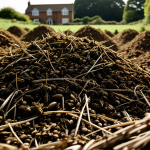Essential Techniques for Perfect Yorkshire Puddings
Mastering Yorkshire pudding basics begins with understanding the critical steps in batter preparation and baking. To make Yorkshire pudding that rises beautifully and boasts the classic golden hue, start with accurate ingredient proportions. The traditional recipe calls for a simple blend of eggs, flour, and milk, where the quality and balance of these ingredients directly influence the final texture and height.
One crucial Yorkshire pudding tip is to allow the batter to rest for at least 30 minutes before cooking. This resting period lets the flour fully hydrate, resulting in a smoother batter that traps steam more effectively during baking. Additionally, always pre-heat your oven and especially the oil in the pan until it is smoking hot. This high temperature ensures immediate steam creation, which is essential for the puddings to swell rapidly and evenly.
Additional reading : How can you prepare a classic steak and kidney pie from scratch?
When combining ingredients, whisk until the batter is completely smooth and slightly glossy. Pour the batter quickly and carefully into the hot oil to avoid losing heat. The rapid temperature change is what triggers the classic puffing. Using these key techniques, anyone can elevate their attempts, unlocking the full potential of this beloved classic British recipe.
Mastering Ingredients and Proportions
Choosing the best flour for Yorkshire pudding is essential for achieving the right texture and rise. Traditionally, plain (all-purpose) flour is recommended because its moderate protein content creates a batter that’s light yet structured. Using self-raising flour adds unnecessary leavening agents, which can cause uneven rising or a cakey texture. The flour must be well-sifted to avoid lumps that disrupt batter smoothness.
This might interest you : How Can Traditional UK Cooking Enhance Modern Dietary Habits?
Eggs in Yorkshire pudding play a critical structural role. Eggs provide moisture, protein, and fat, all of which contribute to the pudding’s elasticity and ability to trap steam during cooking. For optimal results, whole large eggs are preferred, and their number should correspond precisely with the other ingredients to maintain proper batter consistency. Substituting eggs negatively affects the rise and texture, as egg whites create the necessary network for steam expansion.
The use of milk influences both the batter’s fluidity and the finished texture. Full-fat milk is generally preferred because it adds richness and helps create a tender crumb. Some cooks experiment with water or sparkling water to lighten the texture, but these substitutes can reduce flavor depth and may alter the rise.
Regarding ingredient ratios, the classic Yorkshire pudding basics often adhere to a simple volume ratio of equal parts eggs, flour, and milk—typically measured in cups or milliliters. For instance, a common formula is one cup of flour, one cup of milk, and two eggs. This balance ensures a batter that is runny enough to puff up but retains sufficient structure to hold its shape. Small adjustments within this ratio can drastically affect results; too much flour yields dense puddings, while excess milk leads to sogginess.
Common substitutions can impact the outcome significantly. For example, replacing milk with non-dairy alternatives may affect moisture content and the Maillard reaction during baking, reducing the classic golden color. Similarly, swapping plain flour for gluten-free blends requires experimenting with additives like xanthan gum to mimic the gluten structure vital for rise.
Understanding the interplay of these ingredients—and adhering to precise ratios—is foundational for anyone looking to master how to make Yorkshire pudding that matches traditional standards and delights with perfect texture and rise every time.
Temperature, Timing, and Rising
Achieving the perfect rise in Yorkshire pudding hinges critically on mastering the oven temperature for Yorkshire pudding and precise timing. The oven—and more importantly, the oil in the baking tin—must be preheated until very hot, ideally around 220-230°C (425-450°F). This intense heat rapidly generates steam within the batter, which is the key driver behind the characteristic puffing and dramatic rise.
The timing for pouring the batter is equally important. The batter should be poured swiftly into the sizzling hot oil to preserve the temperature shock necessary for steam expansion. Delaying this step allows the oil to cool, diminishing the rising effect. Once poured, close the oven door promptly to maintain stable heat and steam trapped inside the pudding.
Cooking times generally range from 20 to 25 minutes, but it’s essential not to open the oven door during this period. Opening the door causes a temperature drop, which can lead to collapse. By the end of the bake, the Yorkshire puddings should be a deep golden color and have risen to form crispy edges with a tender center.
To maximize rise and ensure golden color, some cooks suggest adding a pinch of salt to the batter to strengthen protein networks and enhance browning via the Maillard reaction. Another trick involves using beef dripping, a classic fat choice, which reaches high temperatures without smoking and adds traditional flavor while supporting crispiness.
In summary, maintaining a preheated oven and oil at the correct temperature, promptly pouring the batter, and respecting cooking times without interruption are the fundamental techniques to master how to make Yorkshire pudding that is impressively risen and beautifully golden every time.
Common Mistakes and Troubleshooting
Understanding why Yorkshire pudding doesn’t rise is key to improving results. One primary cause is insufficient heat: if the oven temperature for Yorkshire pudding or the heated oil isn’t high enough, the batter fails to generate the steam burst that creates the puffed structure. Another common error is pouring batter into a pan that hasn’t reached the proper temperature, which reduces the vital steam formation inside the pudding.
Troubleshooting Yorkshire pudding also involves batter consistency. A batter that’s too thick often results in dense, heavy puddings. This can be corrected by adjusting the ingredient ratios, ensuring the mix retains a thin, pourable consistency that traps steam effectively during cooking. On the other hand, adding too much liquid can cause sogginess or lack of structure.
Fixing soggy or dense Yorkshire pudding requires attention to both preparation and baking. Ensure the pans are preheated sufficiently to maintain high heat throughout the bake. Avoid opening the oven door during cooking, which causes heat loss and collapse of the rising puddings. For undercooked or greasy results, reducing the amount of fat in the pan or increasing the cooking time slightly can help produce a crisper, well-cooked final product.
By identifying common pitfalls and applying precise Yorkshire pudding tips, home cooks can confidently tackle difficulties and consistently produce classic British recipes that boast perfect rise and texture.
Essential Techniques for Perfect Yorkshire Puddings
Mastering Yorkshire pudding basics requires precision in each step, starting with preparing the batter. Begin by whisking the eggs, flour, and milk together until the batter is completely smooth and free of lumps. Achieving a glossy consistency is a sure sign that the mixture is well combined. This smoothness is vital because it allows steam to expand evenly within the pudding during baking, ensuring a consistent rise.
A key Yorkshire pudding tip is to let the batter rest for at least 30 minutes before cooking. Resting not only hydrates the flour fully but also helps the gluten relax, which results in a better texture and improved rise. Skipping this step can lead to puddings that are dense or fail to puff correctly.
Preheating the oven and pan is just as important. The cooking fat in the baking tin must be heated until it is almost smoking; this intense heat causes the batter to sizzle and generate steam immediately upon contact, which is essential for the classic rise and crispiness. Pour the batter swiftly into the hot fat to avoid temperature loss, then close the oven door quickly to trap heat and steam—both critical for successful baking in classic British recipes.
By focusing on these fundamental techniques—batter smoothness, resting time, and preheating—home cooks can confidently master how to make Yorkshire pudding that rises impressively with a golden, crispy exterior and tender interior.
Essential Techniques for Perfect Yorkshire Puddings
Mastering how to make Yorkshire pudding starts with precise preparation and thoughtful handling of key elements. The foundation lies in meticulously combining the ingredients to create a batter that strikes the perfect balance between fluidity and structure. Yorkshire pudding basics emphasize whisking eggs, flour, and milk until the batter is smooth and glossy, which ensures uniform steam expansion during cooking.
A fundamental Yorkshire pudding tip is to let the batter rest for at least 30 minutes before baking. This resting period is critical because it allows the flour to fully hydrate and the gluten to relax, improving the batter’s elasticity. The result is a pudding that puffs up evenly and maintains a tender interior while developing a crisp exterior.
Preheating the pan and the cooking fat to a near-smoking point is another essential technique in classic British recipes. Pouring the batter into hot fat immediately triggers intense steam formation, forcing the skin to rise rapidly. This temperature shock is what produces the characteristic height and golden crust of perfect Yorkshire puddings.
In summary, focusing on batter smoothness, strategic resting, and ensuring a preheated pan are indispensable steps in crafting Yorkshire puddings that meet and exceed traditional expectations.







